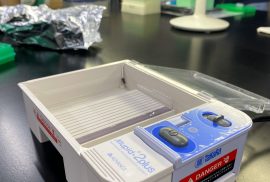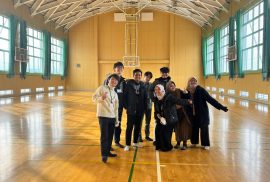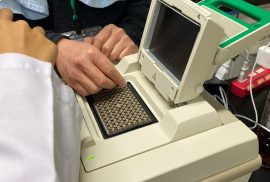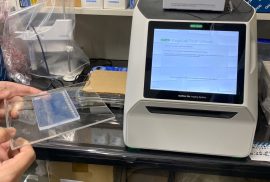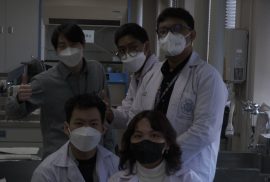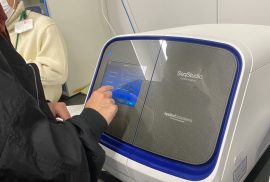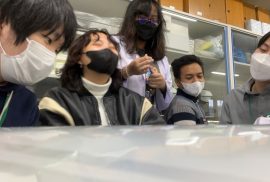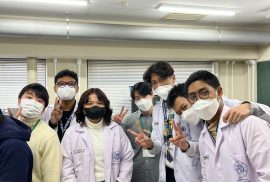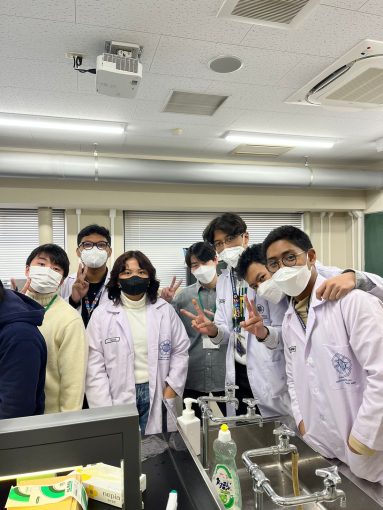
Sakura Science Program-Yamagata University-Daily Chronicle: Day 5
On the fifth (20/02/2023) day, the first thing we did after gathering at the campus at around 8.30 AM was eat breakfast. The breakfast meal was a warm bento that he bought himself by Prof. Yokoyama directly from the store. After we had enjoyed the delicious meal, we headed to the laboratory on the 3rd floor of the B1B Science Building. Before we proceeded with the experiment, Prof Yokoyama presented us with Yamagata Daigaku merchandise. The merchandise included the Yamagata university tote bag, a pen, a mug, and a plastic folder. At that time, the Sakura Science Program participants also gave their souvenirs from Indonesia to the Yamagata students. After the presents exchange concluded, we set our minds on doing the experiment.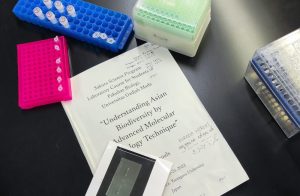
Once we got into laboratory mode, we received the PCR result from yesterday’s experiment. We continued the experiment by doing Electrophoresis with Agarose gel. After mixing the loading buffer and the PCR sample, students started to put the sample in the well. During this process, we were pretty nervous because it was hard to keep stabilizing the micropipette and injecting the sample into the well. Some managed to put the sample into the well on the first try, while others needed to repeat the process a few times before they could put the sample into the well. When all groups finished with their sample, they started the electrophoresis. The electrophoresis ran for 20 minutes at 110 volts.
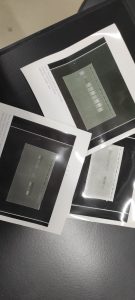
Two groups finished first and the visualization from the UV transilluminator showed a great result. Meanwhile, the other three groups didn’t get a good result, which resulted in them repeating the electrophoresis experiment. On the second try, they used a DNA sample instead of the PCR sample like before. The electrophoresis result from the DNA sample showed that there was DNA in the sample, thus we concluded that the problem was in the PCR process that was done the other day. For this particula
r reason, the three groups had to redo the PCR experiment. While the three groups redo the PCR experiment, the other ones continued to the next step of the experiment. They proceeded to purify the PCR products and PCR for cycle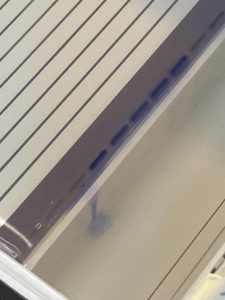 sequencing reaction.
sequencing reaction.
After lunch, the three groups load their new samples into the thermal cycler for conducting PCR. The other two ones have started the sequencing experiments. During this experiment, the sample was “heat-shock” using a thermal cycler at 95°C for 2 min. After that, they set the strips on the plate and put them in the cooler. When it finished, the sample was set in the “SeqStudio” genetic analyzer (Thermo Fisher) for sequencing analysis, which concluded the experiment for the two groups that had a head.
The PCR samples for the other three groups were ready by the time the other ones set in their sample to the SeqStudio, and the other 3 groups had only started to do the electrophoresis experience again once the other two ones finished. This time, the electrophoresis results of the 3 groups showed a result that was good enough for continuing the experiment. Because it was already late at that time, they would continue the experiment the next day. (Syal&Saf)

